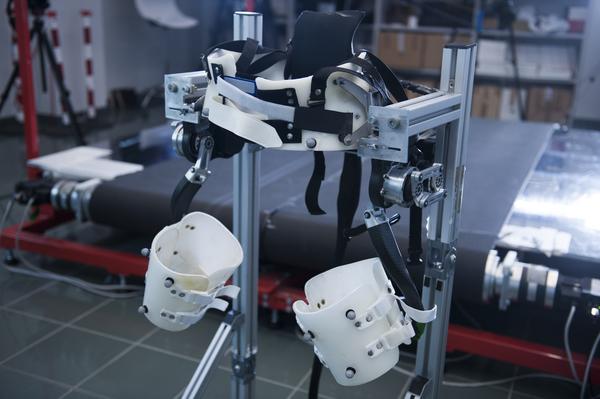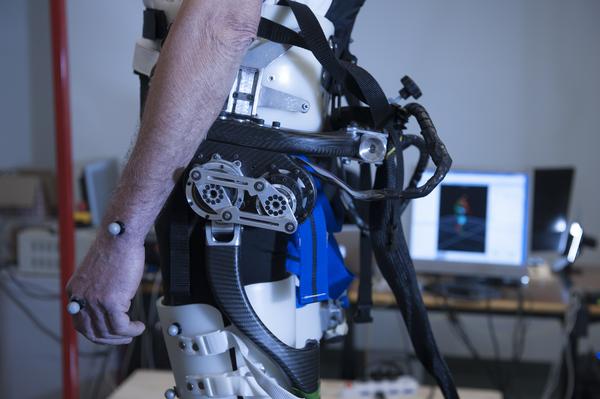Scientists at Scuola Sant’Anna in Italy and EPFL (Ecole polytechnique fédérale de Lausanne) in Switzerland have built a prototype of a smart,
The exoskeleton was designed to help the elderly by preventing

The exoskeleton is wearable from the waist down, and is vastly different from the armored stuff you see in today’s science fiction movies.
«Our smart exoskeleton is
How the exoskeleton works
At Hospital Fondazione Don Carlo Gnocchi in Florence, 69 year old Fulvio Bertelli puts on the wearable machine, a device equipped with motors at the hip, and braces made out of carbon fiber. The scientists adjust a few nuts and bolts, and Bertelli is ready to test his new gear. It is not yet the attire that can be discretely worn outside of the laboratory. But it works.
«I feel more confident when I wear the exoskeleton," says Bertelli after having worn the machine on a special treadmill that can artificially make him lose his balance and slip.

The personalized exoskeleton first detects the particularities of Bertelli’s walk: the patterns of his stride known as the gait. Once this pattern is established, the system’s algorithm is able to detect deviations from his normal gait i.e. the onset of a fall. When this happens, the motors push both of the thighs down, reestablishing Bertelli’s stability at the hip.
From neuroprosthetics to exoskeletons
«I was very lucky to have the opportunity to work with Prof. Nicola Vitiello from Scuola Sant’Anna, an expert in exoskeleton development, and with Dr. Vito Monaco, expert in locomotion biomechanics," says Micera. «Together, we came up with the idea of using an exoskeleton to prevent falls.»
Micera engineers prosthetics that allow amputees to feel again. His interest in prosthetics broadened when he saw the first exoskeleton for
An important aspect of their system is to ensure that the exoskeleton is
Science-based innovation: from human biomechanics to human-robot symbiosis
The variable nature of human behavior represents the main challenge for researchers dealing with the design of wearable robotics. Monaco plans to generalize the results of this study requiring the development of novel solutions so that humans and robots can seamlessly work as a single system.
«Our study revealed that a wearable robotic platform can effectively interact with humans during reactive motor responses, such as accidental slipping. These results open new perspectives for researchers who are expected to develop robotic platforms for enhancing human capabilities all day long," says Monaco.
Exoskeletons and society
«This work paves the way for imagining a completely new generation of exoskeletons that will actually be effective outside of research laboratories thanks to their ability to augment users’ movement and make their mobility more stable and safe," says Vitiello, who believes that wearable robots will be the next wave of information and communication technology that will pervade society, and will assist people in domains ranging from healthcare to industry. He continues, «To reach these goals, exoskeletons must be endowed with features, like the one proved in this study, that really take into account what users can experience in
Source: https://actu.epfl.ch/news/a-powered-exoskeleton-prevents-the-elderly-from-fa/


